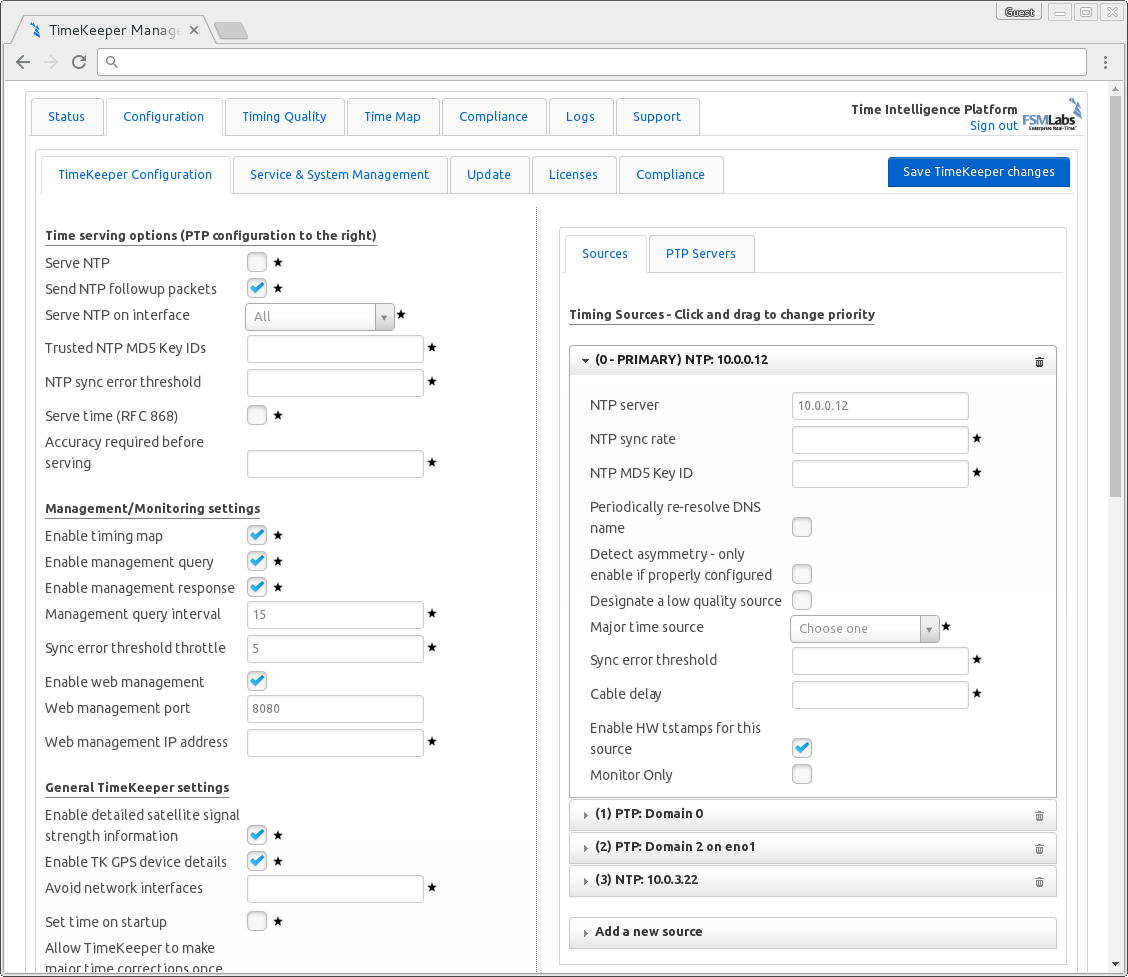Common platform, common tools
Whether deployed as a hardware appliance or a timing client, TimeKeeper provides a consistent built-in web interface that allows users to configure any of the features described in this document. The configuration file can also be modified directly if desired. In the interest of being concise, examples will be given in the form of configuration file fragments.
We already saw the configuration file in the installation steps - for reference, here’s a quick sample view of the configuration tools available via the web interface:

Swiss army knife of timing
TimeKeeper’s abilities come from its core focus on tracking time very accurately from many different sources, and serving it out just as accurately, potentially in many ways.
This means TimeKeeper acts as a Client to start, in order to track all of these timing sources. It steers the local system time to these sources, accurate to the low nanoseconds, making use of any local hardware features it can find.
It then may act as a Server to put that accurate time back out on the network or other means to deliver it to downstream clients.
When these features come together in a hardware appliance, it’s called a Grandmaster. We’ll step through these feature sets and see how they build on each other, providing a common toolset along the way, from individual hosts running client software all the way up to redundant GPS and Rubidium-backed hardware Grandmasters.
First up, let’s look at TimeKeeper as a timing client.